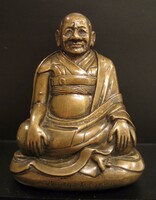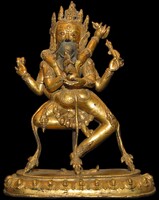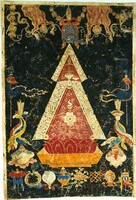Murals: Goose Valley, West Tibet

Goose Valley: the location is far West Tibet, sparsely populated and very isolated.
Above a salt lake is a small group of caves. In the largest cave are two partially destroyed stupas. Originally the sides of the stupas were decorated with paintings.
The stupa on the left has a lower square structure. Adorning the square are depictions of the life story of Shakyamuni Buddha. The upper vase-like portion of the stupa depicts various Tantric deities. A form of Vajrapani and retinue is immediately recognized among the many images.




















